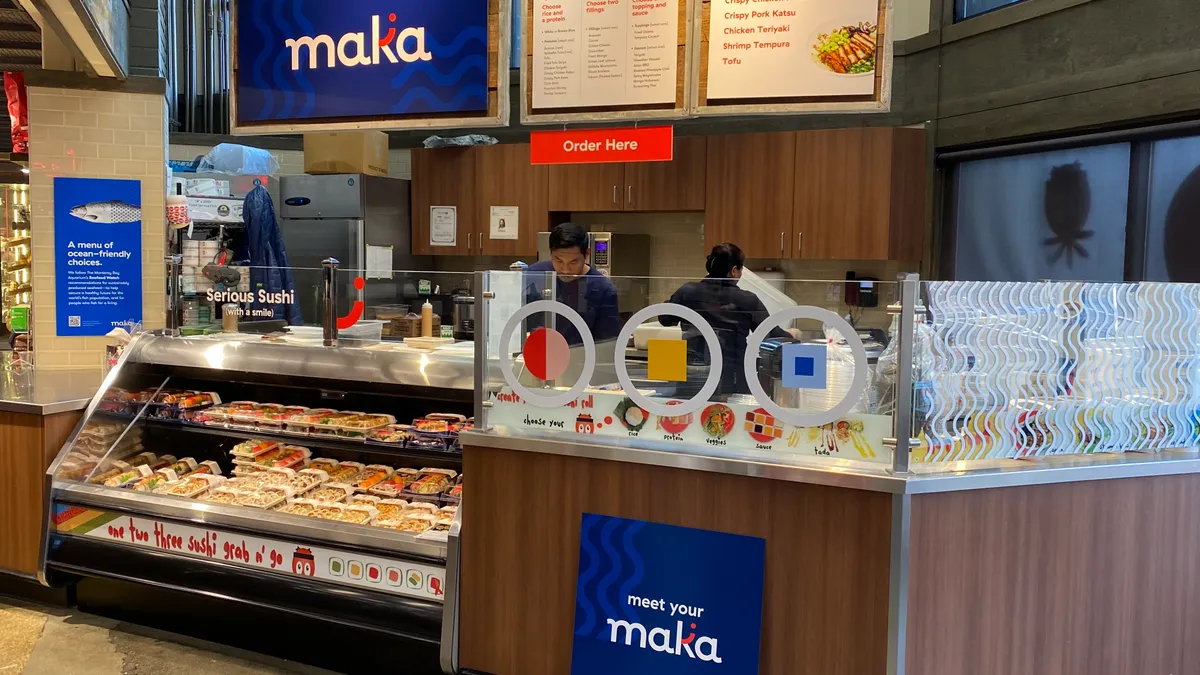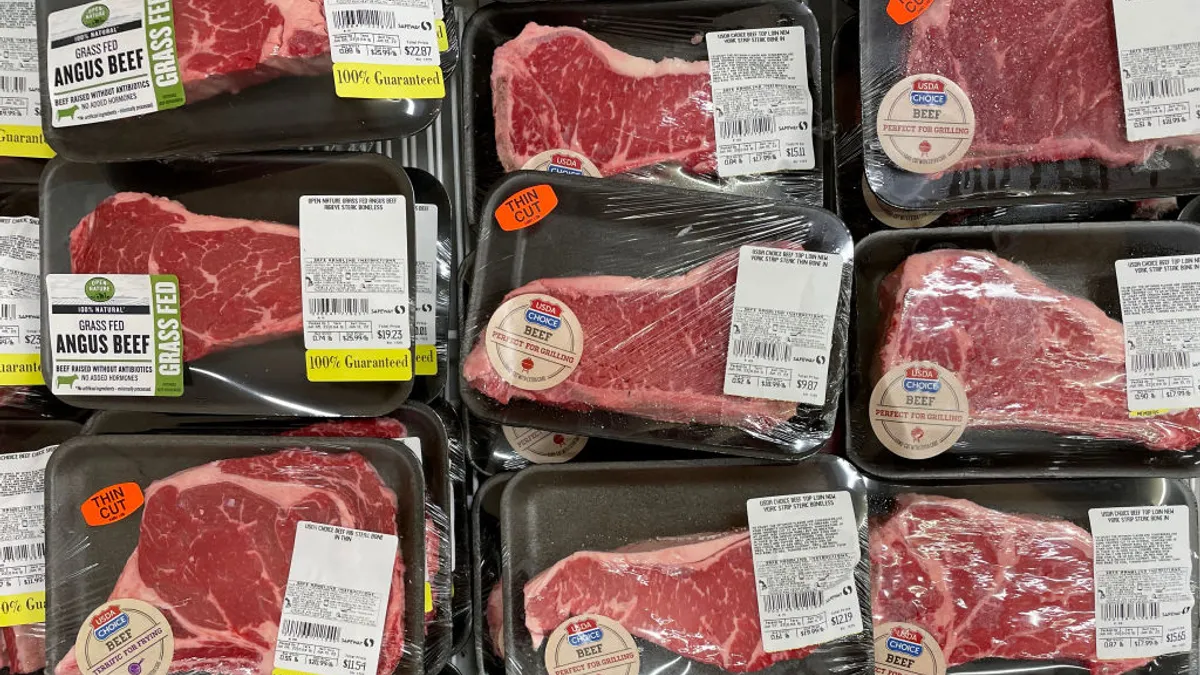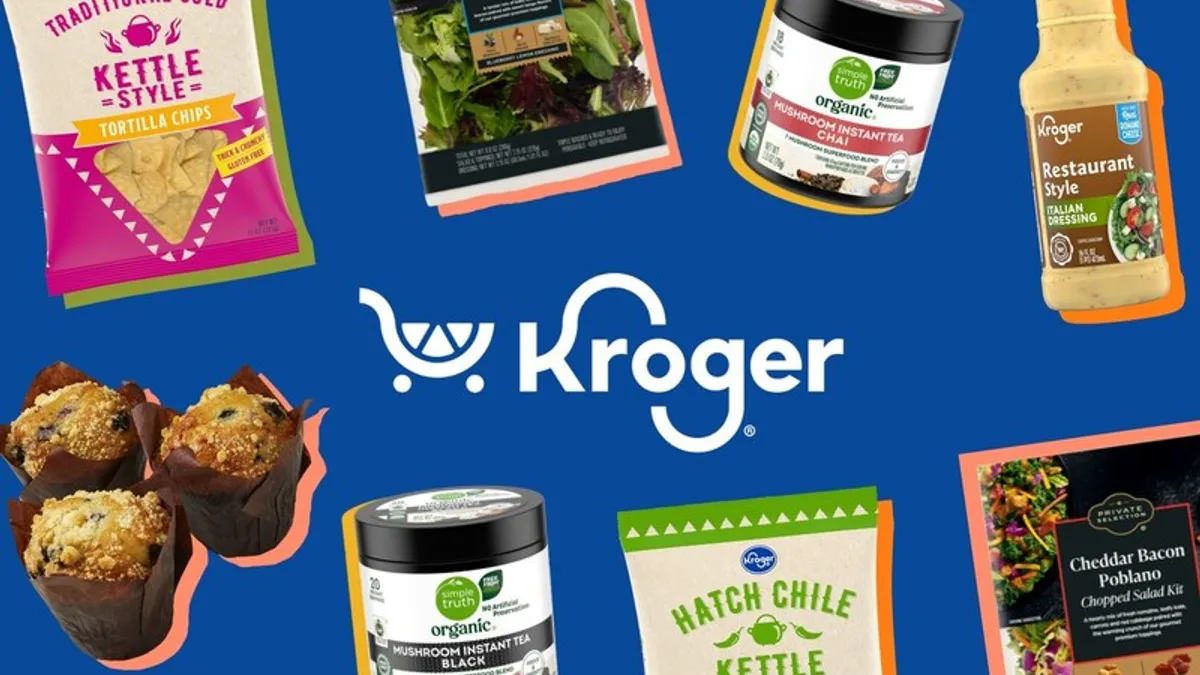"On Special" is a monthly look at top store categories and the retailers that specialize in them.
Supermarket sushi has grown into a staple offering across the grocery industry. With inflation still impacting shopping behaviors, Seattle-area grocery chain Town & Country seized the opportunity to reintroduce the offering under a new private label brand. The grocer’s new Maka line offers up to 65 core menu items along with a rotating selection of sushi and sushi inspired dishes.
The regional grocer launched Maka in October 2022 across all six of its locations, equipping each store with a made-to-order sushi counter as well as a traditional grab-and-go station.
Town & Country Markets chose Maka, meaning “fresh” and “beloved” in Hawaiian, as the name for its newly reinvented sushi offering to help reflect the regional grocer’s commitment to elevating consumer expectations around sushi they buy at grocery stores.
Prior to launching Maka, Town & Country sold sushi under three third-party brands. When the people who ran those brands began to retire, the grocer decided to revamp the offering both behind the scenes and within the sushi counters in its stores.
Town & Country looked to partner with a single company that provided room for innovation, creation and growth — and local supplier Sushi Avenue fit the bill, Shauna Howell, director of culinary services at Town & Country Market, said in an interview.
Sushi Avenue allowed Town & Country to streamline its operations under one vendor, providing more room for experimentation across the Maka brand, a more sustainable offering and a more cohesive launch to season offerings, Howell said.
 Best-sellers
Best-sellers
While Maka hasn’t yet reached its first anniversary, Town & Country has already spotted notable consumer buying trends and has worked to introduce new products. For example, hot rice bowl sales were highest during winter months, while sushi sales saw a 30% sales uptick on a warm spring weekend in mid-May, Howell said.
“Sun equals sushi sales,” Howell said. “I was in the market one evening late and I watched a family come up and throw eight or nine packages [of sushi] in their cart.”
Vegan and vegetarian rolls and sushi-inspired bowls are another high demand category among Maka customers. Each store’s sushi counter makes sure to have a variety of vegan and vegetarian staple options available while simultaneously ensuring that any new promotional or seasonal menu items that roll out also meet these dietary preferences.
Howell said each Town & Country store curates a menu designed to best meet the demands of its own customer base.
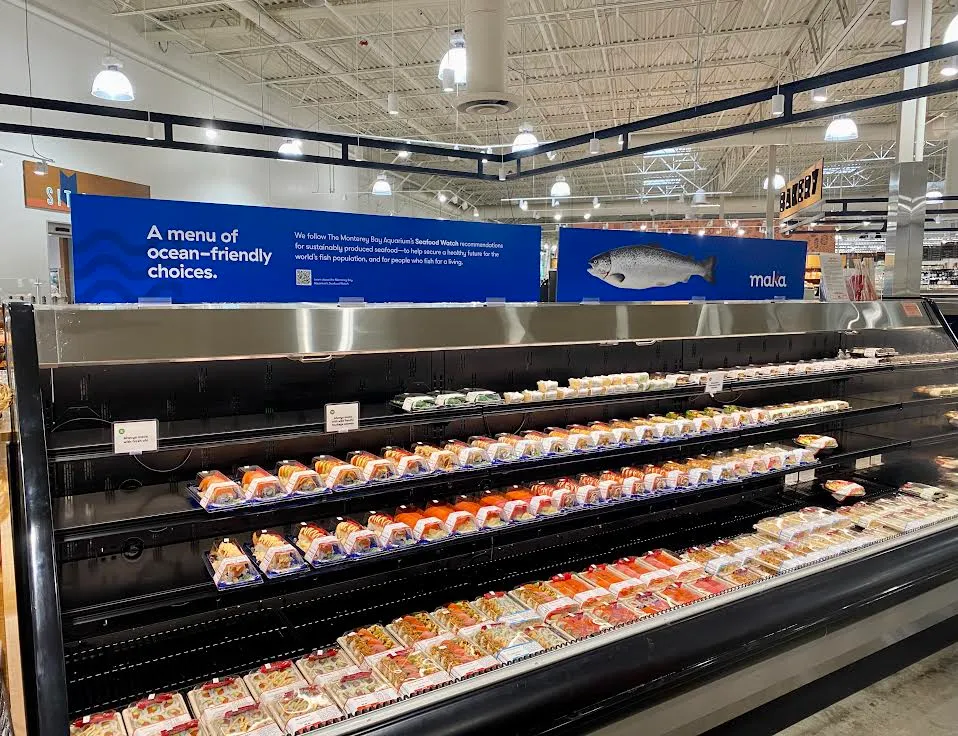
 What's trending?
What's trending?
Town & Country plans to add poke bowls to the Maka menu in June, and predicts that summer customers will gravitate towards the new offering.
Though Town & Country has offered poke before, Howell noted that past performance had been subpar and lacked originality. Maka plans to spice up the poke bowls this time around with a roasted pineapple sauce, a spicy Sriracha and a Hawaiian wasabi, Howell said.
The overall sushi selection in supermarkets has been growing, with stores now offering an average of 15 different types, up 10% since before the pandemic, according to 210 Analytics. Grocery stores carrying sushi average $2,000 in sushi sales per week, according to the data company.
But while the specialty offering is widely popular, only 3.8% of sushi sales involve a promotion, 210 noted, adding that grocers could prompt more trips among existing buyers as well as bring in new customers.
Focus on innovation with assortment
The sushi selection under the Maka brand is vast, and while customers can rely on staple products and traditional rolls to be consistent, Town & Country is leaning into rotating offerings and promotions.
Along with the Sushi Avenue team, Howell visited local restaurants, taste-tested samples as well as analyzed T&C's internal operations in order to find ways to put a spin on the traditional poke meal option, Howell said. She noted the regional grocer was looking for a partnership that would allow it to identify adventurous options and broaden its overall sushi selection.
Town & Country is experimenting with smaller, snack-sized portions of customer favorites, including single-serving inari as well as musubi, Howell said.
The grocer is also encouraging innovation on the shopper’s end through made-to-order counters. The sushi chefs are set up to create custom sushi rolls as well as sushi-inspired rice bowls. Offerings like seaweed salad can be topped with salmon, fresh ahi and shrimp.
Behind the counter
Town & Country store sizes vary from 27,000 square feet to 65,000 square feet, affecting the size of the sushi counters as well as the number of core menu items. However, Howell noted that despite these variations, every category — sushi rolls, hot rice bowls, salads and soon poke bowls — will still be available at each storefront.
The room for freedom and collaboration behind the sushi counter additionally benefits from the fact that each sushi business is local and independently owned.
“Those sushi chefs own their business,” Howell said. “It is their own independent business with a higher level of contribution and supervision with Sushi Avenue.”
The Sushi Avenue company supports these local businesses by working with Town & Country’s marketing team, helping ensure a streamlined and cohesive brand for Maka as well as a high level of quality and sustainability.
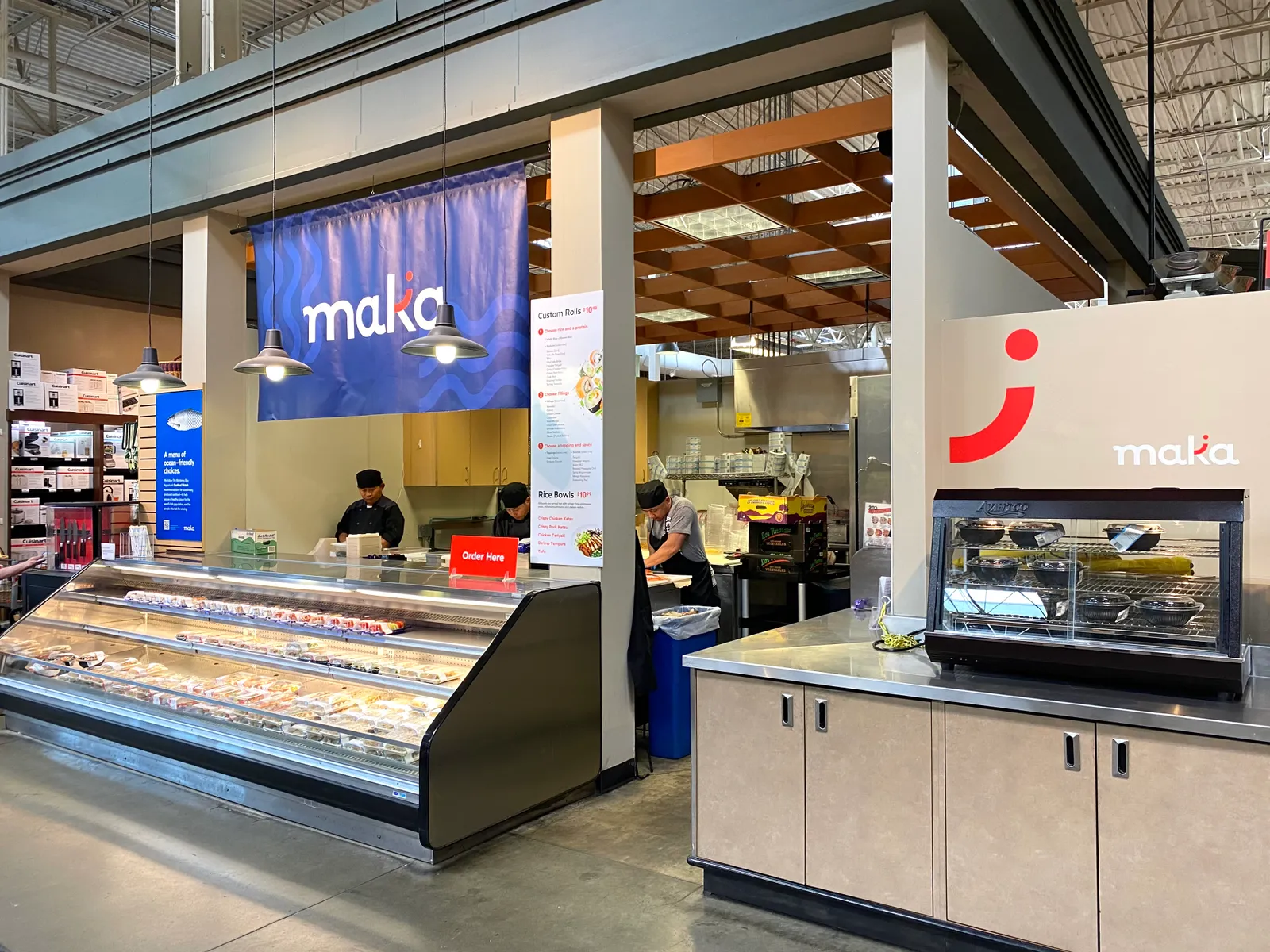
Sustainable from the start
When Town & Country initially set out to reinvent its sushi offering with its own private label brand, sustainability was a top priority — and remains a chief concern, Howell said.
All Maka packaging is compostable and recyclable, and this was a key element in selecting Sushi Avenue as its partner, Howell said.
Sushi Avenue produces packaging for all Maka goods, ensuring that independent contractors are not left with the burden of seeking out containers that meet Town & Country’s sustainability expectations.
Town & Country’s sustainability awareness also extends to sourcing its seafood — so much so that the grocer has stopped serving numerous seafood favorites to adhere to the Monterey Bay Aquarium’s Seafood Watch recommendations for sustainably produced seafood.
While Maka offers more out-of-the-box supermarket seafood options, such as fresh hoki and wild sockeye salmon, as well as omitting dyes in its wasabi and seaweed salad, the grocer has sacrificed serving popular items, like unagi and nearly all eel options because it could not find sustainable sources for them.
“Those were all adjustments for our guests. It took a lot of conversation, it took a lot of promotion, and it’s going to be ongoing,” Howell said. “And I think adding new innovations is meeting the guests where they are with what they’re looking for.”
The state of sushi sales in the U.S.
- During the first quarter of 2023, sushi sales totaled $600 million, a 0.9% increase from the first quarter of 2022, according to data from Circana provided by 210 Analytics. However, unit sales decreased by 2.9% during the first quarter compared with the same time last year, to 65.6 million.
- Dollar sales for sushi have increased by 73.5% and unit sales have increased by 53.7% since the first quarter of 2020, per 210 Analytics.
- While sushi prices have gone up, they have increased at a slower rate than food and beverages. Overall food and beverage prices have increased 29.1% since the first quarter of 2020, compared to sushi’s 12.9% increase, 210 Analytics said.



